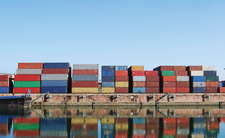Container management with Docker
Container Shipyard

© Lead Image © Ulrich Müller, 123RF.com
Docker is an economical alternative to conventional virtualization. Because each Docker container shares the underlying operating system, it enjoys the resource isolation and allocation benefits of VMs but is much more portable and efficient.
Rarely has such young software raised so much attention in such a short time as the Docker [1] container manager. Docker is one of the fastest growing open source developments in the history of free software. Released in March 2013, it made it to version 1.0 in June 2014 and was declared ready for production. In the same month, Docker was already part of Red Hat's RHEL 7 release. Further cooperative agreements exist with Canonical, openSUSE, CoreOS, VMware, IBM and others. Moreover, Docker is a member of Google's Kubernetes project [2].
The image associated with the name Docker sums it up: a ship (computer) is loaded with containers that you can stack, transport, isolate, and protect (Figure 1). Docker containers in IT are isolated virtual environments for isolated execution of processes and applications. Docker is currently used primarily for developing, testing, and deploying applications and can isolate them along with their dependencies in containers. These applications have practically no overhead and can run nearly as fast as native applications.
Unlike the well-known hypervisors [3] VirtualBox, VMware Workstation, HyperV, Parallels Desktop, or Xen, a Docker container doesn't need its own operating system. Each container uses the basic functions of its host system and is therefore self-sufficient and isolated from other containers. Only the host's kernel needs to match that of the guest.
[...]
Buy this article as PDF
(incl. VAT)
